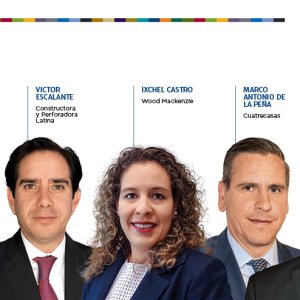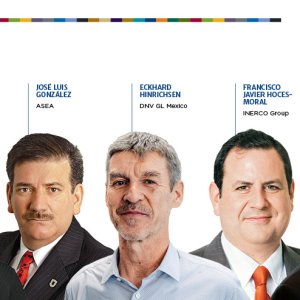
PEMEX’s Strategic Priorities
Rodulfo Figueroa, the Corporate Director of Planning, Coordination and Performance of PEMEX, speaking at the Mexico Oil & Gas Summit 2016 in Mexico City, presented the changes the present governmental administration has enforced on an enterprise that has been a pillar in the development of Mexico and a key player on the global oil industry.
Currently, PEMEX is the eighth largest oil producer in the world and even though it has always contributed to the income of the federal government, the development of the company in the past years has been less than harmonious. The decline in production, as a consequence of the steep decline of Cantarell’s production over the past 12 years, has taken a toll on PEMEX’s finances.
In his opening presentation, Figueroa mentioned that in the past, PEMEX’s investments and risks were assumed solely by the enterprise. “The targets and development priorities of the enterprise were determined by Congress and were focused on production goals rather than value creation. The legal framework enforced by the Energy Reform, transforms PEMEX’ objectives, shifting from production goals to value creating activities.”
Private participation is now allowed in the hydrocarbon market. Upstream activities are subject to the technical regulations of the National Hydrocarbon Commission (CNH). Industrial transformation activities are subject to economic regulations. The Ministry of Energy (SENER), the Ministry of Finance (SHCP) and ASEA also function as industry regulators.
The activities performed by PEMEX have been distributed among the newly created subsidiary companies, Figueroa said. Each company has a specific function, focusing on activities related to drilling, upstream, industrial transformation, cogeneration of products, fertilizers production, ethylene production and, logistics.
In this new context, PEMEX’ activities have transitioned. However, the company now faces challenges derived from regulations of activities and asymmetric regulations. It is oriented to become a competitive enterprise focused on value creation, aiming to become an international reference.
Among the many changes faced by the enterprise is a new fiscal policy, which promotes competition among companies. “The prices are no longer set by the government and are left to be set by the market,” said Figueroa.
PEMEX is now subject to operational and financial goals set by its board of directors. The new working scheme is focused on increasing the company’s business portfolio, operational excellence, business model design and creating a high-performance culture. The new operating environment allows the company to enter alliances with private corporations in any activity in the production chain. The association with private enterprises provides benefits that extend beyond obtaining economic resources. It allows PEMEX to diversify risks, incorporate international best practices, acquire new technologies and increase its materiality.
Regarding production costs in shallow water and onshore fields, Figueroa mentioned that PEMEX is very competitive. However, it lacks the necessary infrastructure to maintain its cost competitiveness when it comes to production in deepwater and nonconventional fields, hence the importance of finding adequate partners for such ventures. PEMEX needs to leave its role as the monopolistic provider of hydrocarbons.
The government is well aware that PEMEX will maintain its dominance in the short term. “However, once private investors dabble in the industry, the national company will have to work within a competitive environment.”
Figueroa recognized that the volatility of international markets impacts the company. However, he mentioned that adjustments had been made to make sure the company’s strategies and the long-term goals are not affected. The estimated prices of the Mexican oil barrel have gone from US$50 at the beginning of the year to US$31.32. The adjustments help to re-dimension PEMEX without compromising its future production.
Regarding the expectations of the company, Figueroa said that PEMEX needs to strengthen its capabilities. The NOC must evaluate new ways to finance its operations alongside partners, sharing risks and benefits, as well as taking care of its main asset: its human capital.
To comply with the set objectives, the company must change the strategic focus strategy it followed for years. PEMEX needs to overcome the circumstances and elements that do not promote growth. Its current strategic plan is based on the stability and continuity of operations, operational and energy efficiency, reliability and safety of procedures, modernization and adoption of technologies and the incorporation of best practices.
However, changes in the production model and objectives are not enough to obtain a full transformation. In the short term, PEMEX is working on an internal re-organization, increasing its liquidity level, and reducing its debt level. In the medium-term, the company is going to be focusing on the strengthening of its capacities and on attending its objective markets’ needs. The long-term goal is to achieve business sustainability.
For the next five years, PEMEX intends retain its position as the main oil producer in Mexico while consolidating its presence in the market, with stronger financial and operational performance, and maintaining its role as a pillar on the development of the country.














